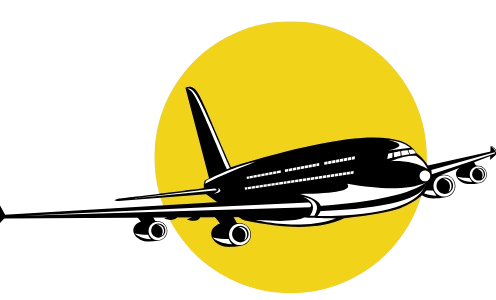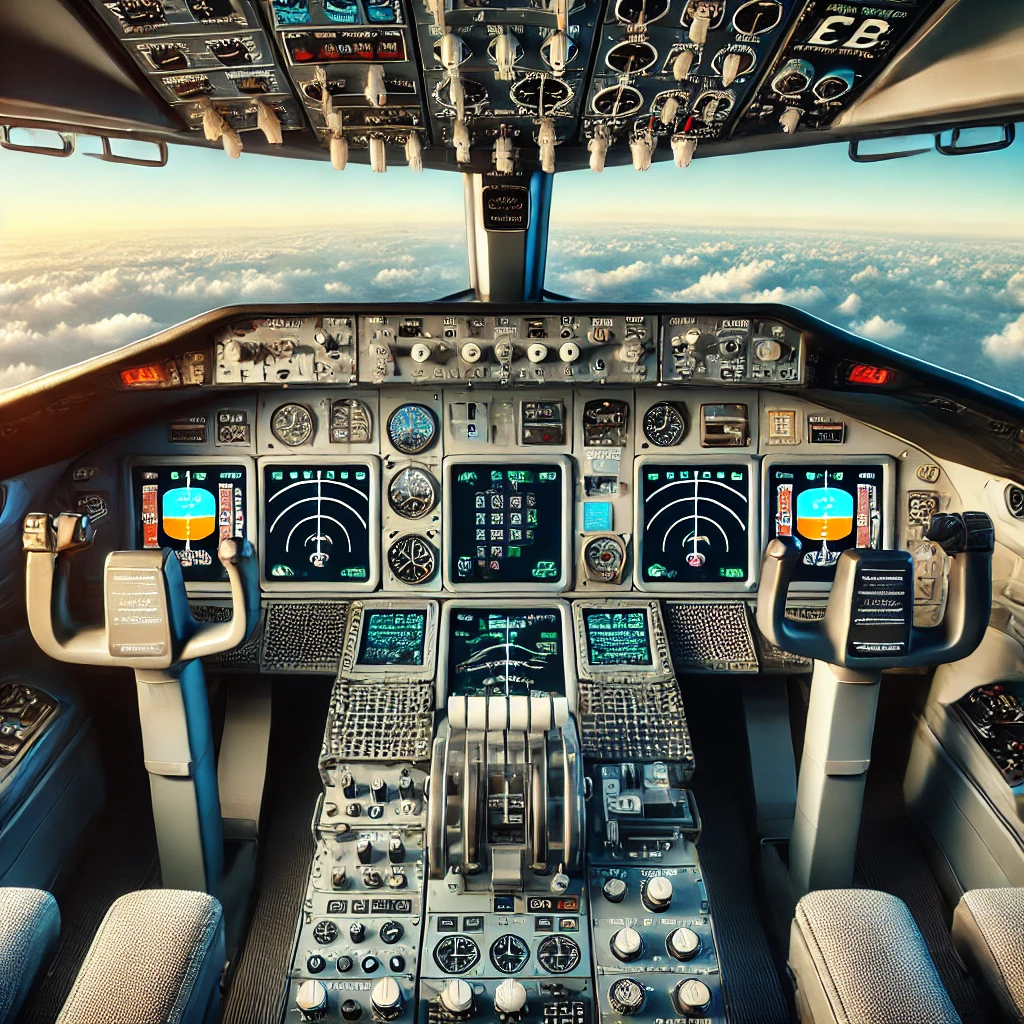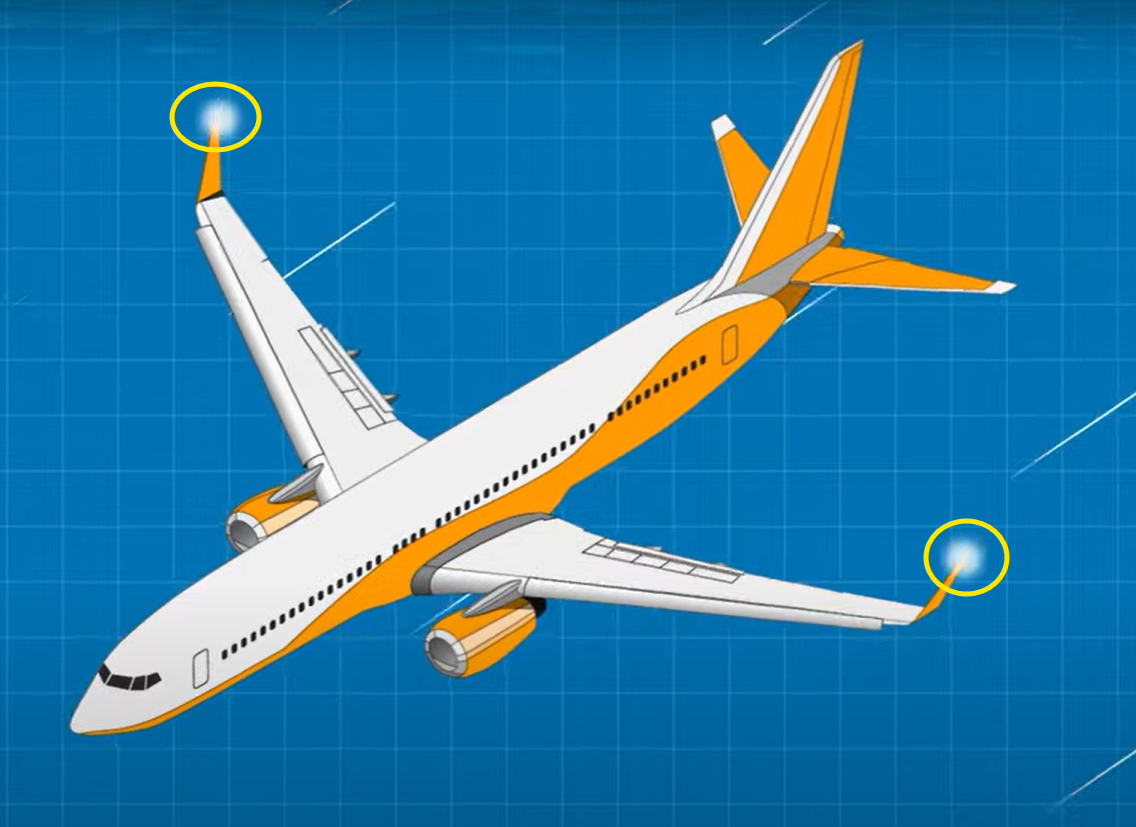Flying conjures up images of clouds and breathtaking views. But behind this awe-inspiring experience is a labyrinth of engineering that ensures planes are steady and secure. Primary flight controls (ailerons, elevator, vortices, etc.) are known by most, but many do not realise the key role secondary flight controls play. Enter the unsung heroes whose commitment to excellence, hard work, and dedication affect several phases of airline operations from take-off, to cruising, landing, and beyond.
Whether flaps that generate lift are used for low-speed maneuvers or spoilers that govern descent rates, the need to grasp these controlling aspects is paramount for anybody interested in aviation. So buckle up, and let’s go for a ride into the captivating world of secondary flight controls—where accuracy and safety take center stage in the skies!
Primary vs. Secondary Flight Controls
Flight controls in an aircraft come in two main categories: primary and secondary. Primary flight controls are essential for basic maneuvering. They include ailerons, elevators, and rudders. These components directly influence the aircraft’s pitch, roll, and yaw.
Secondary flight controls enhance the performance of these primary systems. They improve efficiency during various phases of flight but aren’t crucial for basic operation. Flaps and spoilers fall into this category.
While primary controls dictate how an airplane responds to pilot inputs, secondary ones modify airflow around the wings and fuselage. This adjustment can lead to better lift or drag management without altering the fundamental control surfaces.
Understanding both types is vital for pilots and engineers alike. Each plays its distinct part in ensuring smooth operations throughout all stages of flying.

The Function of Flaps in Airplanes
Flaps are crucial components of secondary flight controls. Positioned on the wings, they extend and retract to modify the aircraft’s aerodynamic properties.
When deployed, flaps increase lift at lower speeds. This is particularly vital during takeoff and landing phases. Pilots can achieve a higher angle of attack without stalling, allowing for safer maneuvers in critical moments.
In addition to enhancing lift, flaps also improve drag characteristics. Increased drag helps slow down the airplane more effectively when descending or landing. This combination allows pilots greater control over speed and altitude adjustments.
Different flap designs exist—such as plain, split, and slotted types—each serving specific performance needs based on aircraft design and operational requirements. Their versatility makes them a favorite among aviators worldwide for better handling during various flight conditions.
Understanding Spoilers and Their Role in Flight Control
Spoilers are vital components of secondary flight controls, often overlooked by casual observers. These devices work by disrupting airflow over the wings, providing critical assistance during various phases of flight.
When deployed, spoilers reduce lift and increase drag. This helps pilots manage descent rates and maintain control during landing approaches. By effectively killing lift on one wing, they can also enhance roll control in turbulent conditions.
Moreover, spoilers play a crucial role in preventing stalls. They allow for greater maneuverability when navigating through challenging weather or executing sharp turns.
The design ensures that these surfaces respond quickly to pilot inputs. Modern aircraft use advanced sensors to optimize spoiler deployment based on current flight dynamics.
Understanding how spoilers function emphasizes their importance within the broader context of secondary flight controls. Their contribution is essential for safe and precise operations throughout any journey in the skies.
Other Types of Secondary Flight Controls (elevators, ailerons, etc.)
Secondary flight controls encompass more than just flaps and spoilers. They include vital components such as elevators and ailerons, which play significant roles in aircraft maneuverability.
Elevators are crucial for controlling the pitch of an aircraft. By adjusting the angle of the tailplane, pilots can raise or lower the nose during flight. This control is essential for climbing or descending smoothly.
Ailerons, located on the outer wings, manage roll movements. When one aileron moves up while the other moves down, it creates differential lift across the wings. This action allows pilots to bank left or right effortlessly.
These secondary controls work together harmoniously with primary systems. Their precise functioning ensures that pilots maintain stability throughout various phases of flight. The subtle dance between elevators and ailerons enhances overall performance during maneuvers like turns and climbs.
How These Controls Affect the Maneuverability and Stability of an Aircraft
Secondary flight controls play a pivotal role in the overall maneuverability and stability of an aircraft. Flaps, for instance, enhance lift during takeoff and landing, allowing pilots to operate at slower speeds without stalling. This capability is essential when navigating tighter airspaces or shorter runways.
Spoilers contribute to roll control by disrupting airflow over the wing’s upper surface. They can quickly reduce lift on one side of the airplane, making it easier to turn or bank during flight maneuvers.
Other secondary controls like elevators and ailerons work in tandem with flaps and spoilers. Elevators manage pitch while ailerons handle lateral balance. Together, they ensure smooth transitions between different phases of flight.
The interplay between these systems enhances not only responsiveness but also safety in various flying conditions. Effective use of secondary flight controls makes all the difference when facing turbulence or unexpected changes in altitude.
Importance of Proper Maintenance and Inspection of Secondary Flight Controls
Proper maintenance of secondary flight controls is crucial for the safety and efficiency of any aircraft. These components, including flaps and spoilers, play a significant role in maneuverability. A malfunction can lead to serious consequences.
Regular inspections help identify wear and tear before they escalate into major issues. Technicians check for hydraulic leaks, mechanical integrity, and other factors that could impact performance.
Neglecting these checks can compromise an aircraft’s stability during flight. Pilots depend on responsive controls to navigate various conditions safely.
Moreover, adhering to maintenance schedules ensures compliance with aviation regulations. It fosters trust among passengers and crew alike.
Ultimately, investing time in thorough inspections prevents costly repairs down the line while enhancing overall flight safety. Airlines prioritize this aspect not just as a requirement but as a vital component of operational excellence.
Case Studies: Real-Life Examples of the Consequences of Faulty or Malfunctioning Secondary Flight Controls
One of the most infamous incidents involving secondary flight controls occurred in 1985 with Japan Airlines Flight 123. The aircraft suffered a catastrophic failure due to a faulty rear pressure bulkhead, leading to the loss of its vertical stabilizer and rudder. This malfunction severely compromised control, highlighting how critical these systems are in maintaining stability.
Another notable case is the Air Canada Flight 624 accident in 2015. During landing, the aircraft’s spoilers failed to deploy correctly. This malfunction resulted in an extended landing roll and ultimately caused a runway overrun. The investigation underscored how essential reliable secondary flight controls are for safe landings.
These examples serve as stark reminders that even minor issues with secondary flight controls can escalate into major safety concerns, impacting both pilots’ abilities to maneuver and overall passenger safety during flights.
Advancements in Technology and Future Possibilities for Secondary Flight Controls
Recent advancements in technology are reshaping the landscape of secondary flight controls. Innovations like fly-by-wire systems have revolutionized how pilots interact with their aircraft. This shift towards digital interfaces offers enhanced precision and responsiveness.
Artificial intelligence is emerging as a game-changer, providing real-time data analysis that can optimize control surfaces based on flight conditions. Imagine an aircraft that adjusts its flaps autonomously to improve fuel efficiency or enhance safety during turbulent weather.
Moreover, materials science continues to push boundaries. Lightweight composites could lead to more agile and efficient secondary controls, reducing drag and improving performance across various flight regimes.
Looking ahead, integrating advanced sensors might allow for predictive maintenance of these critical components. By foreseeing potential malfunctions before they occur, airlines could avoid costly downtime and ensure safer operations.
The future holds immense possibilities for enhancing the reliability and functionality of secondary flight controls in aviation.
Conclusion: The Critical Role of Secondary Flight Controls in Ensuring Safe and Efficient Air Travel
Secondary flight controls play an essential role in the safe operation of aircraft. They enhance maneuverability, improve stability, and contribute significantly to the overall performance during various phases of flight. By effectively managing airflow over the wings and body of an airplane, these controls allow pilots to navigate complex airspace with confidence.
Proper maintenance and regular inspections are crucial for ensuring that secondary flight controls function as intended. Even minor malfunctions can lead to serious consequences, underscoring their importance in aviation safety. As technology advances, we may see innovations that further elevate the capabilities of these systems.
The future looks promising for secondary flight control systems. With ongoing research and development, there is potential for enhanced efficiency and reliability that could redefine our flying experience altogether. The critical functions they serve not only help keep flights smooth but also ensure a safer journey for everyone on board—making them indispensable components in modern aviation.




